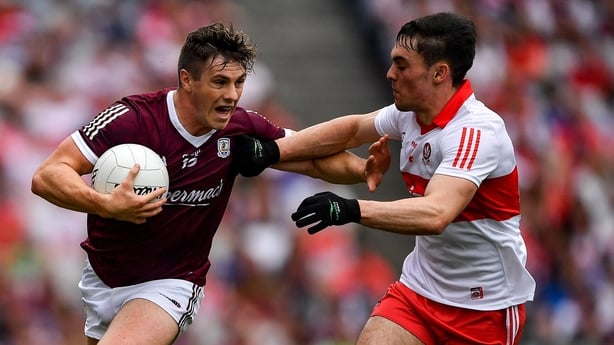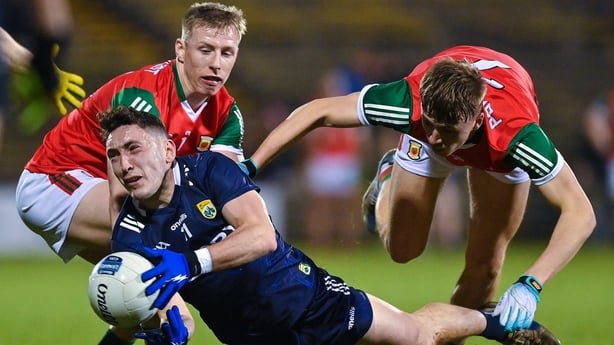So that's that then. Allianz Football League 2023 done and dusted. What about the league finals you may ask? Well, if they appeared a somewhat irrelevant interlude previously then, within the new competitions format, they are more a cumbersome burden on already stretched teams than the cherry on the cake.
The injury risk alone in the mouth of the key summer competitions will weigh heavy on minds of players and team managements.
Don’t get me wrong, I, like the rest of us, am intrigued by the final pairings, particularly the Division 1 and Division 2 finals. How the respective teams will approach them will be interesting but there is no ignoring the fact that all the participants, win or lose, will brush themselves down and move on.
Bottom line, compared to what is coming up, the results simply don’t matter.
Yet, it is hard to argue against the league once again having produced the goods in terms of an excellent competitive structure. The measly two points for a win and limited games prevent teams breaking from the pack or falling out of contention.
The final day drama and endless permutations right across the divisions speaks volumes. After all the drama though, have we learned much?
It’s very easy to read into every individual team’s plot lines. The successes, the failures and everything in between. But how much, if any, will turn out to hold any water come the business time of the year in July?
For everything I’m beginning to think I know there is a Cluxton just around the corner. Even looking for the most basic trends finds more contradictions than consistency.
In some quarters it was the classic story of the new manager and the famous bounce. Certainly, worked brilliantly for Mayo, Wicklow and to a certain extent Roscommon. But ask Limerick or Donegal and see how that theory holds up.

Maybe experience and time within the setup is the key - Galway, Derry, Cavan and Louth all show that to be true. Only problem is that some in Armagh or Clare might differ from that opinion as much as shades of luck arguably deserted both.
What about the tactical side of things? Teams are favouring the more defensive side of things and for Derry and Galway it has them among the most fancied teams in the country yet, in the likes of Armagh and Donegal there were distinct frustrations being voiced regarding the absence of a strong attacking game.
Mayo and, to lesser extent, Kerry remain the best exhibits of that attacking, expansive game yet, extolling the virtues of such brave, direct football might raise a wry smile in Meath. If you can reach firm conclusions out of all of that you’re a good one.
Have we learned nothing then? For me there’s a few nuggets that will continue to hold true. Teams have to have a solid defensive setup – that may be numbers based, which is certainly the most common, or a high intensity, cross-pitch tackling approach a la Mayo.
Either way the effort and pride a team takes in shutting down opposition attacks and threats must be massive.
In attack, possession remains key but teams have improved significantly at coping with occasional turnovers. With that, teams are prepared to take more risks.
There is more long ball featuring amongst the best attacking teams in the league – particularly during the much talked of transition from defence to attack.
The other must have is quality incisive running patterns up front including the use of small previously hidden pockets of space, such as in the corners and behind defensive lines, which have increased the real estate of effective attacking areas.

To pull off these type of attacks depends on a large number of players up the pitch playing at high energy.
The combination of such attacking efforts with the defensive effort previously mentioned is why, like it or not, massive athleticism remains key. Yet, for even the fittest side, it is impossible to play at top intensity in both defensive and attacking phases of the game for the 80 minutes that routinely constitutes an inter-county game.
With this, the ability for teams to seamlessly vary the rhythm and pace of a game and, ideally, to be the team dictating the same, will become a key point of difference.
The collective game intelligence to pull this off successfully, particularly against the biggest opponents, will be a challenge teams need to master if they are to be the ones walking up the steps.
My one firm prediction is that, come the finish of the group stage (almost two months away) all the happenings of the past few weeks will feel like an irrelevance.
Team momentum then, their injury status and form of their key men will be much more informative as to how the final stages of the All-Ireland campaign will pan out and are highly likely, due to the amount of water that must pass under the bridge, to be quite different to where we stand now.
Arguably then, the league, for all its entertainment, twists and turns moves on having left us just one irrefutable point: A Monaghan team, led by Monaghan men is likely to do Monaghan things.
We need your consent to load this rte-player contentWe use rte-player to manage extra content that can set cookies on your device and collect data about your activity. Please review their details and accept them to load the content.Manage Preferences
Listen to the RTÉ GAA Podcast on the RTÉ Radio Player, Apple Podcasts, Spotify, or wherever you get your podcasts.

